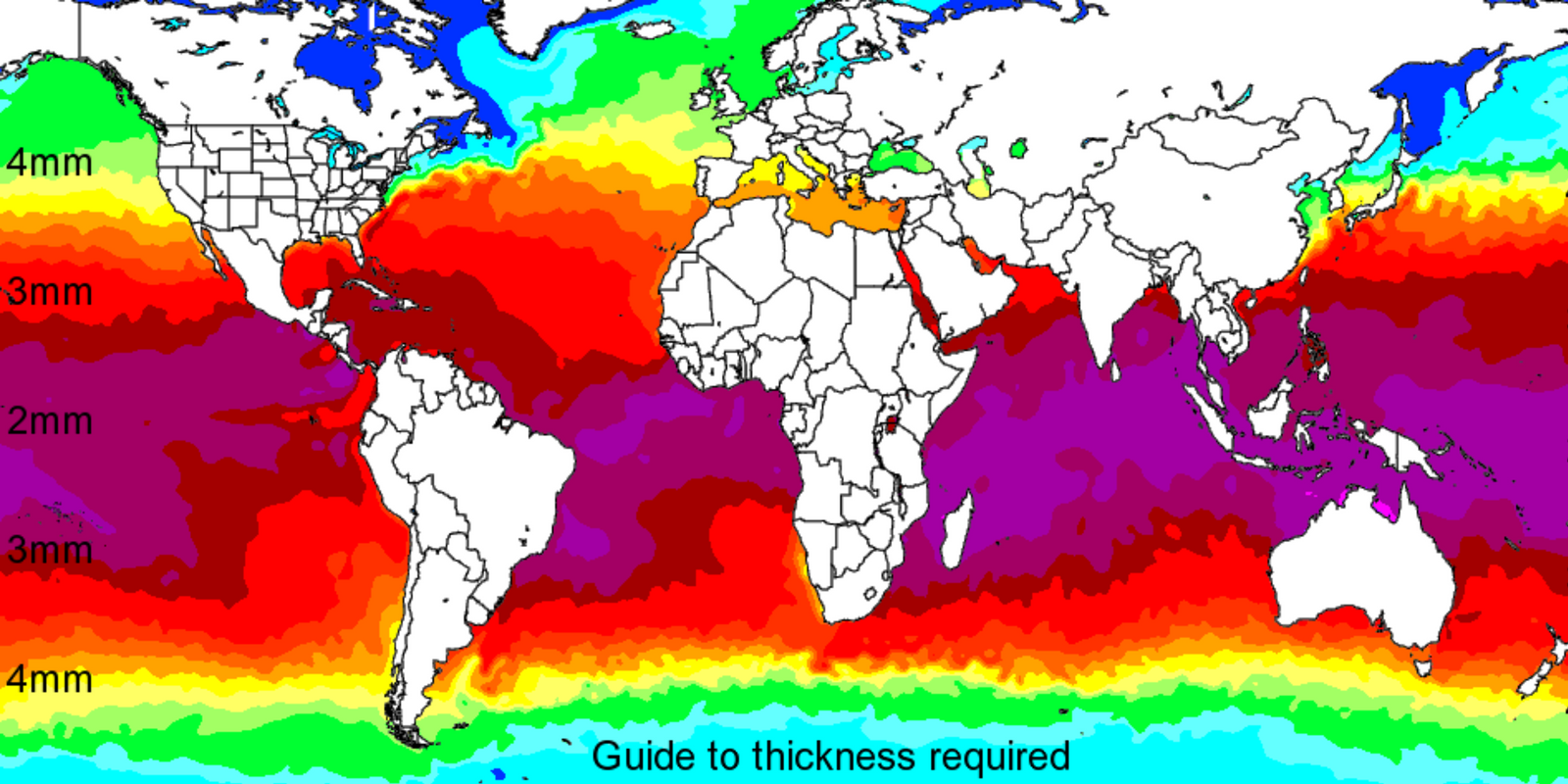How to Choose the Right Wetsuit for You: Conditions, Sea Temp, and More

Hi Crew
I wanted to share a wetsuit story with you, an example of picking the right suit to stay comfortable in the water. We recently helped out a diver who’s used to warm tropical waters but was heading to South Australia for a Great White Cage dive with Rodney Fox. He figured he’d need a thick 7mm two-piece open cell suit to handle the cold.
Was that the best choice? Well, there’s a lot to consider—location, time of year, wetsuit type, body size, and how used to the cold water you are.
How Wetsuits Work
It’s all about how your body deals with heat loss in water. Water pulls heat away from you way faster than air. Imagine stepping into a 10°C room—without warm clothes, you’ll feel the chill in minutes. In water, heat loss happens about four times faster because your body isn’t just warming the air around you—it’s trying to heat the whole ocean. Even in 30°C water, stay in long enough, and you’ll start feeling cold.
A wetsuit traps a thin layer of water against your skin, which your body warms up. If that warm water flushes out and is replaced by cold water, you start losing heat. That’s why a good-fitting wetsuit is key. Tighter seals at the neck, wrists, and ankles help, and open cell suits (where the raw neoprene sticks to your skin) are even better at keeping water exchange to a minimum. Adding a hood makes a big difference too—since we lose a lot of heat through our heads.
Thickness and Materials Matter
The thickness of your wetsuit is your insulation. Thicker suits keep you warm longer by slowing heat transfer. Layering wetsuits works great, too. Not all neoprene is the same, though—ours is limestone-based, which makes it more flexible, warmer, and longer-lasting compared to petroleum-based neoprene. The tiny air bubbles in limestone neoprene are packed tighter, meaning better insulation and less water absorption. Rather than just going thicker, layering suits by using a vest, short jane, swimwear or even a spring suit under your main suit is a better option. A 5mm suit 2 piece open cell even with our limestone is hard to move in whereas a 3mm or a Surf steamer with an extra layer is much easier.
Water Temperature and Your Suit Choice
The suit you need depends on the water temperature. Ocean temps change with latitude, depth, and ocean currents. Take Australia, for example—our east coast is warmer than the west at the same latitude because of the East Australian Current (the one from Finding Nemo). Seasonal changes and weather patterns like El Niño also play a role and can by upwelling bring cooler water to the surface.

Our tropical diver, who never wears a wetsuit unless the water drops below 24°C, was really worried about how cold South Australia would be. To some of us, 24°C is warm enough to skip a wetsuit altogether, but it’s all about what you're used to. A photographer we all know, who had been diving in 26–30°C water, borrowed a 2mm suit for a trip to Seal Rocks (23 C) but ended up using her 3mm open cell because she had been in warmer water for so long.
Traveling divers often stand out in their suit choices. A Victorian diver might use a 5mm open cell in winter but switch to a lighter surf suit for a Queensland trip—while the local QLD divers use 5mm suits in the same water. Personal tolerance plays a huge role, and body size matters too—smaller divers lose heat faster than bigger ones as they have a greater skin surface area to body volume ratio.
Quality Over Thickness
A well-fitting, high-quality suit will outperform a thicker, bulkier one. Our favorite photographer took her first 5mm open cell suit to Tasmania for a kelp forest shoot. Most divers there wore 7mm suits, drysuits, or layered up, but because her suit fitted so well, she was fine even in 11°C water while others were shivering.If i was going into 11 C i'd add another layer under 5mm.
Back to Our Tropical Diver
The first thing I asked was when he was going, because water temps in South Australia can drop to 10°C in winter. But since he was going in February—when the water hits a balmy 18–20°C—his wetsuit choice wouldn’t work. A 7mm suit would have been overkill, even a 5mm seemed too much. So, despite his doubts, we sent him a 3mm open cell.
It was perfect! He had an amazing time in the cage and stayed warm the whole dive.
Final Thoughts
No matter how tough you are, cold gets to everyone eventually. I remember doing research on Wobbegong sharks in mid-NSW—long hours in the water. I layered a 3mm surf suit with a 3mm two-piece over a 5mm scuba suit. Even then, after two and a half hours, I was shivering so much I could barely record data.
Nothing ruins a dive faster than being cold from the start. The suit you choose has to work for you. Local knowledge helps, but factor in what you’re used to, your body type, and how long you’ll be in the water.
So, where’s your next trip? Maldives for 28°C water or Great Whites in winter at 12°C? Either way, pick the right suit, and you’ll enjoy every second underwater!
Here's our Fader range and temperature guide but add in your own personal adjustments to do what's best for you.




